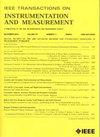Noncoplanar Positive Compensation Decoupling Technology in a Small-Loop Transient Electromagnetic System
IF 5.6
2区 工程技术
Q1 ENGINEERING, ELECTRICAL & ELECTRONIC
IEEE Transactions on Instrumentation and Measurement
Pub Date : 2025-06-20
DOI:10.1109/TIM.2025.3579831
引用次数: 0
Abstract
In the transient electromagnetic method (TEM), the early primary field signals can interfere with the secondary field signals due to the turn-off time and mutual inductance between the transmitting and receiving coils, resulting in a shallow blind area. This primary field coupling interference (PFCI) is particularly pronounced when using a multiturn, small-loop coil structure, which significantly limits TEM’s effectiveness in near-surface detection. To address this issue, several decoupling techniques have been proposed. Among them, the off-center self-compensation technology is considered effective and has been applied in systems such as airborne TEM. However, this approach has drawbacks because it is susceptible to primary field remanence caused by structural errors, and its eccentric design results in inadequate detection capabilities and lateral resolution. To overcome these limitations, we proposed a new noncoplanar positive compensation decoupling technology. This device enhances structural stability by positioning a positive compensation coil coaxially with the transmitting coil and coplanar with the receiving coil. Additionally, the positive compensation coil effectively enhances the device’s shallow detection capability by both reducing the relative horizontal distance between the transmitting and receiving coils and providing stronger shallow excitation signals. Simulation and field experiment results demonstrate the effectiveness of the new device.小回路瞬变电磁系统的非共面正补偿解耦技术
在瞬变电磁法(TEM)中,由于发射线圈和接收线圈之间的关断时间和互感,早期的一次场信号会干扰二次场信号,造成浅盲区。当使用多匝、小回路线圈结构时,这种初级场耦合干扰(PFCI)尤为明显,这极大地限制了TEM在近地表探测中的有效性。为了解决这个问题,已经提出了几种解耦技术。其中,离心自补偿技术被认为是有效的,并已在机载瞬变电磁法等系统中得到应用。然而,这种方法也有缺点,因为它容易受到结构误差引起的初级油田残留的影响,而且它的偏心设计导致探测能力和横向分辨率不足。为了克服这些限制,我们提出了一种新的非共面正补偿解耦技术。该装置通过与发射线圈同轴和与接收线圈共面定位正补偿线圈来增强结构稳定性。此外,正补偿线圈通过减小发射线圈和接收线圈之间的相对水平距离和提供更强的浅层激励信号,有效地增强了器件的浅层检测能力。仿真和现场实验结果验证了该装置的有效性。
本文章由计算机程序翻译,如有差异,请以英文原文为准。
求助全文
约1分钟内获得全文
求助全文
来源期刊

IEEE Transactions on Instrumentation and Measurement
工程技术-工程:电子与电气
CiteScore
9.00
自引率
23.20%
发文量
1294
审稿时长
3.9 months
期刊介绍:
Papers are sought that address innovative solutions to the development and use of electrical and electronic instruments and equipment to measure, monitor and/or record physical phenomena for the purpose of advancing measurement science, methods, functionality and applications. The scope of these papers may encompass: (1) theory, methodology, and practice of measurement; (2) design, development and evaluation of instrumentation and measurement systems and components used in generating, acquiring, conditioning and processing signals; (3) analysis, representation, display, and preservation of the information obtained from a set of measurements; and (4) scientific and technical support to establishment and maintenance of technical standards in the field of Instrumentation and Measurement.
 求助内容:
求助内容: 应助结果提醒方式:
应助结果提醒方式:


